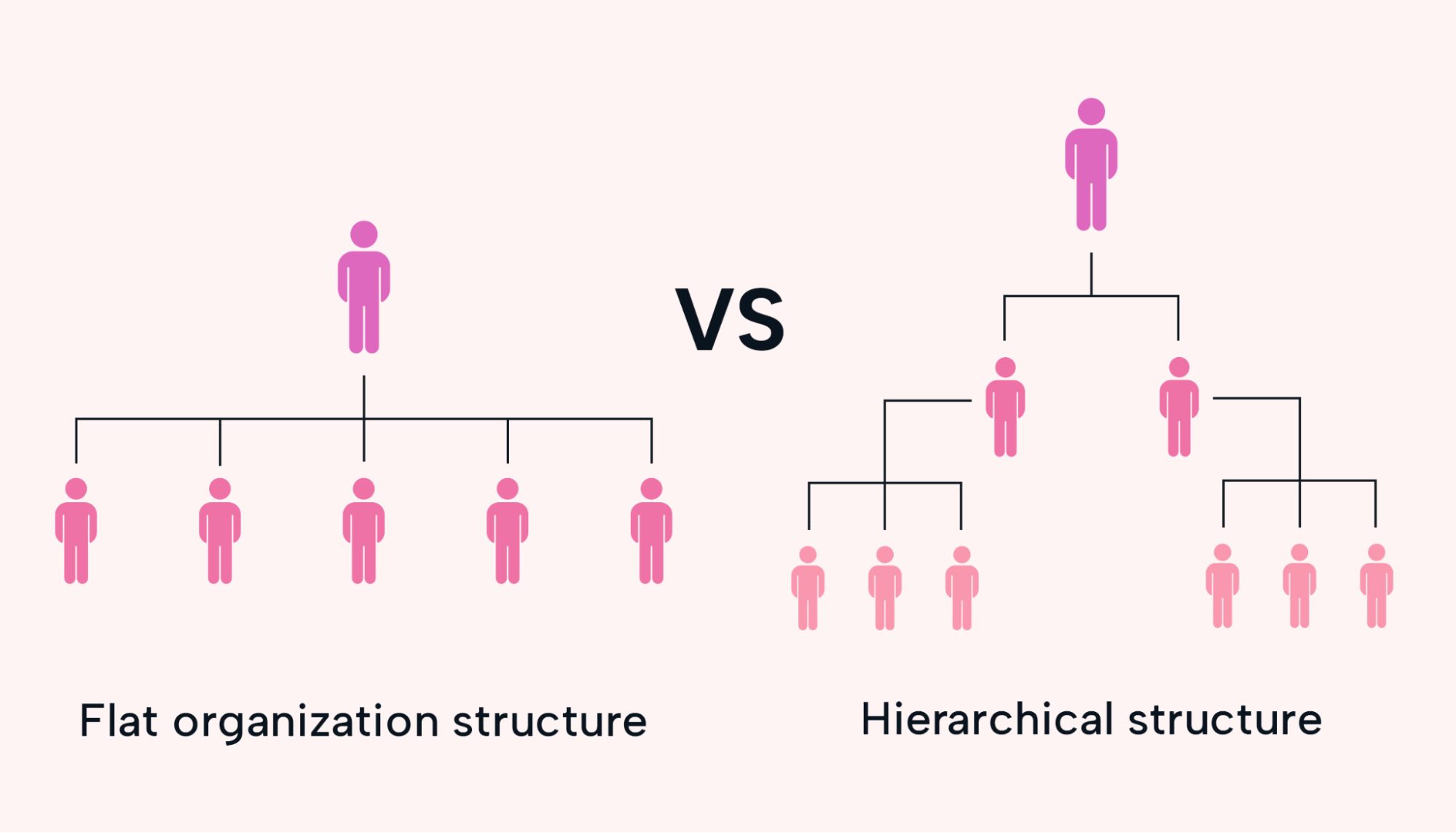Introduction: The Allure and Challenges of Flat Structures
In the world of project management, organizational structure plays a pivotal role in how teams operate, communicate, and ultimately succeed. When it comes to Basecamp, a project management tool and also a company famous for its flat organizational structure, the question arises: is this flat structure a blessing or a curse for project managers? To answer this, we need to dissect what it means to work in a flat structure, the advantages it offers, and the potential pitfalls that can arise when managing projects in such an environment.
In a traditional hierarchical organization, project managers and their teams typically report to superiors in a clear, tiered structure. These managers are responsible for decision-making, overseeing work, and ensuring deliverables are met. In contrast, a flat structure eliminates layers of management, giving employees greater autonomy, collaboration, and decision-making power. But does this freedom create more opportunities for innovation and success, or does it lead to chaos and lack of direction? In this article, we explore both sides of this debate in the context of Basecamp’s unique approach.
The Flat Structure: What Does It Mean?
Before diving into the implications for project managers, let’s first define what a flat structure is. At its core, a flat structure is one where there are few or no levels of middle management between staff and executives. Companies with a flat structure emphasize a collaborative, self-organized environment where employees at all levels have direct access to decision-makers. In Basecamp’s case, this philosophy is embraced in both its internal operations and the product it offers to other companies.
Basecamp is not just a tool for managing tasks and projects, but also a product of the company’s own flat culture. With only a handful of employees in management roles, the company fosters an environment where people are expected to take initiative, solve problems, and contribute without being micromanaged. This can be incredibly empowering, but also comes with unique challenges, especially for project managers who have traditionally relied on clear directives and authority.
The Blessings: Why Flat Structures Can Be Great for Project Managers
1. Faster Decision-Making

One of the most significant benefits of a flat organizational structure is the ability to make decisions quickly. Without the need to wait for approvals from multiple layers of management, teams can act swiftly, which is critical in fast-paced project environments. For project managers, this can be a game-changer. When the path to decision-making is clear and direct, issues can be resolved promptly, and the project can stay on track without unnecessary delays.
In Basecamp’s case, employees are encouraged to make decisions on their own, reducing the bottleneck of waiting for a manager’s sign-off. This means that project managers can focus more on managing the project’s scope, quality, and deadlines, rather than having to constantly chase approvals from higher-ups.
2. Empowered Teams Lead to More Innovation
A flat structure often results in empowered employees who feel ownership over their work. This can lead to increased creativity and innovation, as employees at all levels contribute ideas, challenge assumptions, and offer unique perspectives. For project managers, this can be an invaluable asset. Rather than just executing a plan that has been handed down from the top, project managers in flat organizations can collaborate more freely with team members, which often leads to better problem-solving and innovative solutions.
When the team is encouraged to think independently and take initiative, the project manager’s role becomes less about directing every move and more about guiding and facilitating collaboration. This can result in a more engaged and productive team, leading to more successful project outcomes.
3. A Sense of Ownership and Accountability
Flat organizations often cultivate a strong sense of ownership among employees. With fewer managers to oversee every detail, team members are expected to take responsibility for their tasks and results. For project managers, this can be a double-edged sword, but when managed correctly, it can be a blessing. Teams that are self-managed and accountable often require less supervision and are more invested in the success of the project.
In a flat structure like Basecamp’s, a project manager can focus more on guiding the overall direction and ensuring that the team has the tools and resources they need. The absence of rigid hierarchies means that team members are less likely to pass the buck when something goes wrong, creating a culture of accountability that can lead to higher-quality deliverables.
4. Communication and Transparency Are Key
In a flat organization, communication is typically more open and transparent. With fewer layers between employees and leaders, everyone has access to the same information, and feedback is more direct. For project managers, this means that they can stay informed about the project’s progress and challenges without being bottlenecked by formal reporting lines. Additionally, the open communication structure allows for more meaningful feedback, which can help to resolve issues before they escalate.
Basecamp, as a tool, is built around fostering clear, open communication. The company practices what it preaches, using tools to ensure that everyone involved in a project is kept in the loop, regardless of their role or level. This is beneficial for project managers, who can track progress, provide feedback, and collaborate with team members without the typical barriers created by hierarchies.
The Curse: Challenges Project Managers Face in a Flat Structure
While the flat structure comes with its share of advantages, it is not without its challenges, especially for project managers. Let’s explore some of the potential drawbacks of working in a flat organization.
1. Lack of Clear Authority
One of the most glaring challenges in a flat structure is the absence of clearly defined authority. In traditional hierarchical organizations, project managers have clear decision-making power. They are the ones who set deadlines, allocate resources, and resolve conflicts. In a flat structure, however, everyone is encouraged to take ownership, and decision-making is often more decentralized.
For project managers in a flat structure, this can be frustrating. Without a clear chain of command, it can be difficult to enforce decisions, particularly when there is disagreement within the team. While collaboration and shared decision-making are generally positive, project managers may find it challenging to keep everyone aligned and ensure that decisions are being made efficiently.
2. Overlapping Roles and Responsibilities
In flat structures, employees are often given more autonomy, but this can lead to role ambiguity. Without a clear hierarchy, it can be difficult to define exactly who is responsible for what. In the case of project management, this could mean that different team members are working on similar tasks, or that certain aspects of the project are neglected because no one has clearly taken ownership.
For project managers, this can result in a lack of clarity around who is responsible for certain deliverables. It can also create a situation where tasks fall through the cracks, or where team members inadvertently duplicate work. Without clearly defined roles, project managers may spend more time clarifying responsibilities and managing team dynamics than actually focusing on the project itself.
3. Potential for Decision Paralysis
While a flat structure can speed up decision-making in some cases, it can also lead to decision paralysis. When everyone is encouraged to have a say, it can be challenging to make quick decisions, especially when team members have differing opinions. For project managers, this can be a source of frustration, as important decisions get bogged down in endless discussions.
In a flat structure like Basecamp’s, project managers must strike a delicate balance between encouraging input from the team and keeping the project moving forward. If decisions are constantly delayed due to too many voices or conflicting priorities, it can result in lost momentum and a lack of direction.

4. Difficulty in Scaling Projects
Flat organizations often work well in small to medium-sized teams, where everyone can collaborate closely. However, as the team grows, the challenges of maintaining clear communication, ownership, and accountability can become more pronounced. For larger projects or teams, the absence of a hierarchical structure may lead to chaos and inefficiency.
For project managers managing large projects or teams, the lack of clear reporting lines can make it more difficult to coordinate work effectively. While the flat structure encourages autonomy, it also means that there may be fewer clear guidelines around how work should be divided and tracked. This can make scaling projects more difficult, particularly when it comes to managing large groups of people with varying skill sets.
Balancing the Best of Both Worlds
While a flat structure can present challenges for project managers, it is not necessarily a structure that should be avoided. In fact, the key to success in a flat organization is finding the right balance between autonomy and accountability. Basecamp’s culture and tools offer valuable lessons on how project managers can embrace the benefits of a flat structure while minimizing the potential downsides.
To make the most of a flat structure, project managers should focus on fostering clear communication, defining roles and responsibilities early on, and encouraging collaboration while still maintaining enough structure to ensure that the project stays on track. It’s about empowering team members without sacrificing the clarity needed to achieve results.
Conclusion: Is a Flat Structure Right for Your Projects?
In the end, whether Basecamp’s flat structure is a blessing or a curse for project managers largely depends on the context of the project and the people involved. For smaller teams or projects that value innovation, collaboration, and quick decision-making, a flat structure can be an incredibly effective way to work. However, for larger, more complex projects, the lack of clear authority and role definitions can create confusion and inefficiency.
Ultimately, the key to success lies in how project managers navigate the challenges of a flat structure. With the right strategies and tools, a flat structure can become a powerful asset for any project. In a world where agility and collaboration are often prized, Basecamp’s flat structure might just be the future of project management—if managed with care.























